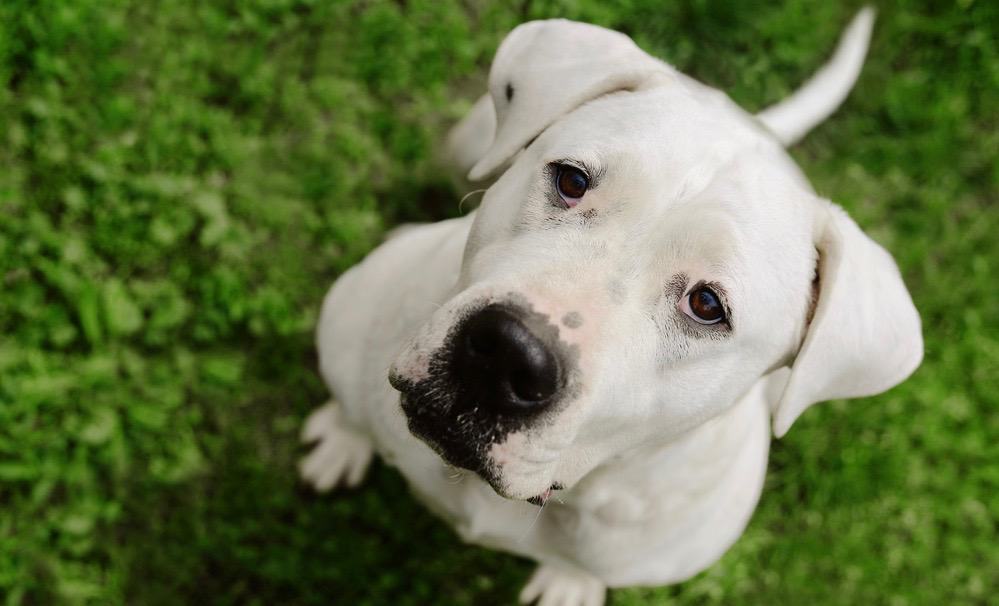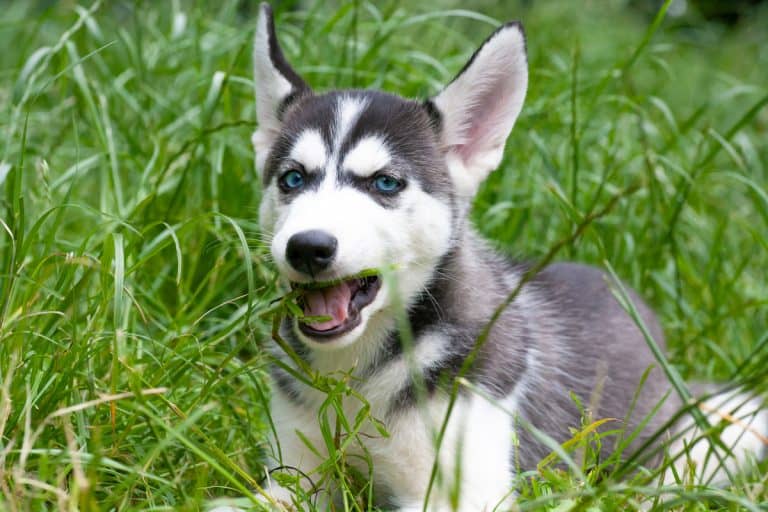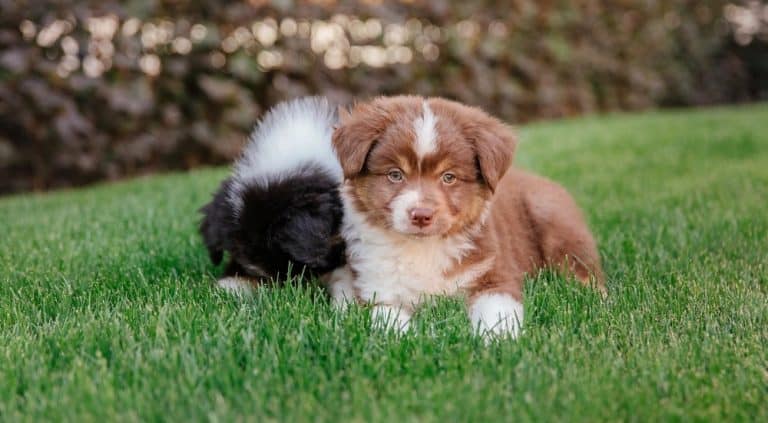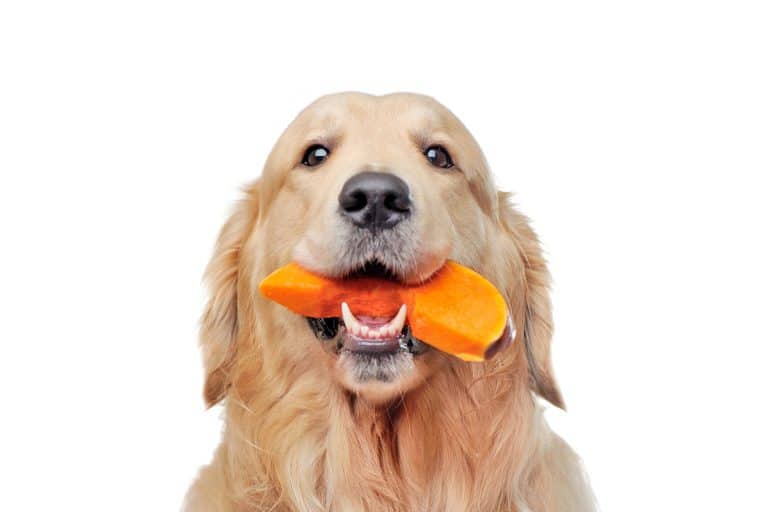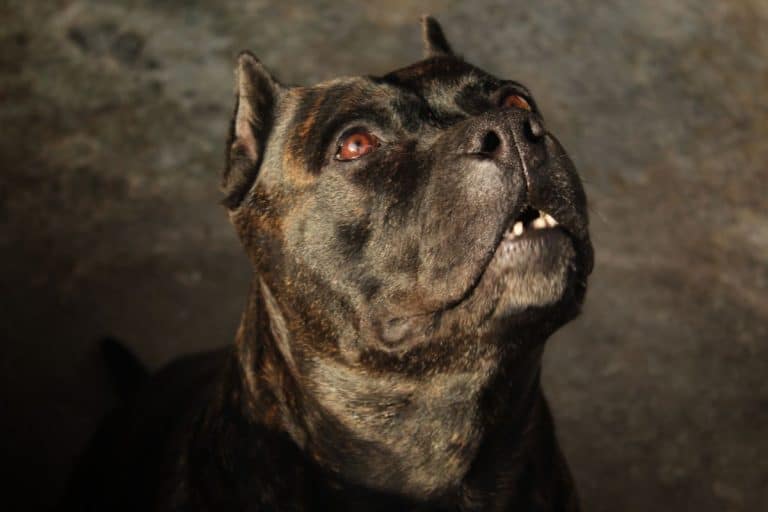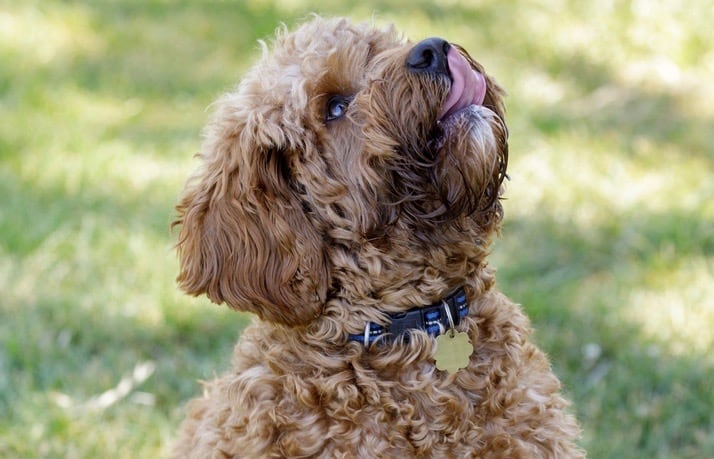Dogo Argentino Weight Chart – Size & Growth Chart
Have you just bought a Dogo Argentino and wondering about its weight? A Dogo Argentino weight chart gives you the different weight categories for your puppy at the different stages of their life.
On average, an adult female Dogo Argentino weighs between 71 and 77 pounds while a male Dogo Argentino weighs around 88 and 99 pounds.
Ensuring that your puppy is maintaining a healthy weight throughout their life will keep them away from health conditions related to weight gain.
This article will provide you with information on what to expect as your puppy grows, the health conditions they are genetically predisposed to, and much more!
When Is A Dogo Argentino Fully Grown?

Being a large breed, Dogo Argentino reaches their adult weight and height at around the age of 16 and 18 months.
In the first 7 to 8 months, Dogo Argentino puppies experience fast physical growth and as they reach adolescent age, the growth slows down as they fill out and gain muscle mass.
Dogo Argentino puppies reach their mental maturity at around the age of two years, though some can still have puppy behaviors for another year.
The growth rate of your puppy can be affected by certain factors such as genetics, health, diet, and physical activity.
Dogo Argentino Weight Chart
Monitoring the weight of your puppy throughout the various stages of their life using a Dogo Argentino weight chart will ensure that they are maintaining an ideal weight.
Feeding your puppy healthy, balanced foods and giving them the right amount of exercise will help them stay fit and prevent any excess weight gain.
On average, a 3-month-old female Dogo Argentino should weigh between 28 and 32 pounds. At six months, they should weigh between 52 and 59 pounds and weigh between 73 and 83 pounds at the age of one year.
On the other hand, a male Dogo Argentino at 3 months should weigh between 32 and 34 pounds. They should weigh between 59 and 64 pounds at 6 months and weigh between 83 and 93 pounds at one year old.
Both the male and female Dogo Argentino will end their weight growth at the age of 19 months.
Dogo Argentino Puppy Weight Chart
| Age | Weight (kg) | Weight (lbs) |
|---|---|---|
| 3 Months | 14.3 - 15.7 kg | 31.5 - 34.4 lbs |
| 4 Months | 18.8 - 20.4 kg | 41.4 - 45 lbs |
| 5 Months | 22.7 kg - 25 kg | 50 - 55.1 lbs |
| 6 Months | 26.7 - 28.9 kg | 58.9 - 63.8 lbs |
| 7 Months | 30 - 32.4 kg | 66.1 - 71.4 lbs |
| 8 Months | 32.1 - 35.2 kg | 70.7 - 77.6 lbs |
| 9 Months | 34.3 - 37.6 kg | 75.6 - 83 lbs |
| 10 Months | 35.8 - 39.5 kg | 78.9 - 87.1 lbs |
| 11 Months | 36.5 - 41.3 kg | 80.5 - 91 lbs |
| 12 Months | 37.8 - 42 kg | 83.2 - 92.6 lbs |
Dogo Argentino Growth Chart – What to Expect
The following Dogo Argentino growth chart tracks the growth and development changes you should expect throughout all the stages of your puppy’s life:

Birth – 2 Weeks
This is the neonatal stage where the puppy is completely dependent on the mother for warmth as they cannot regulate their body temperature.
They also depend on the mother’s milk for nutrition because the colostrum contains antibodies and other substances that improve the puppy’s immunity. At this stage, the puppy cannot see, hear, or crawl
At two weeks, your puppy needs to have their deworming treatment as they are prone to getting worms.
3 Weeks – 12 Weeks
This is the most influential stage of your puppy and what they learn at this period can influence their life. This is the socialization stage, and it is necessary that you introduce them to other dogs and people.
You can start weaning your puppy when they are 4 weeks old, and they can be fully weaned between 6 and 8 weeks. At 8 weeks, they can be transitioned to a new home, and they should have received their vaccinations.
4 Months – 9 Months
This is the juvenile period where most of their organs have developed, and their growth rate starts slowing down.
This is the stage to introduce a training program to your puppy to improve their motor and social skills as well as obedience.
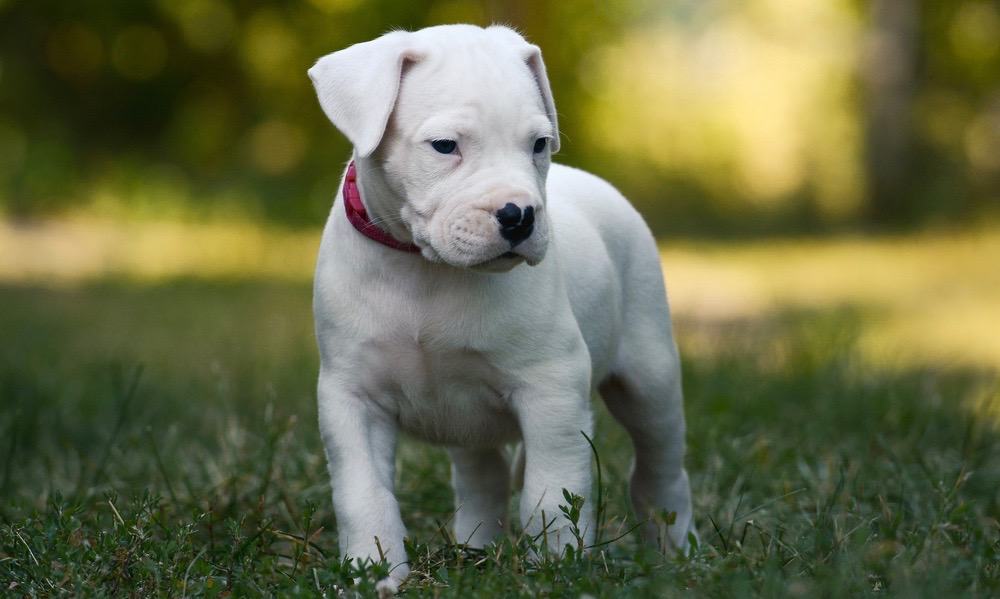
At around the age of 6 months, your puppy reaches their sexual maturity which makes it a good time to spay or neuter them. During this stage, your puppy shows dominance and wants to be the leader in your home.
10 Months – 18 Months
This is the period where you puppy reaches their physical maturity and become adults. At the age of 16 months, transition your puppy to adult food as they now require fewer calories.
However, they still need lots of mental stimulation and physical exercises as they have plenty of energy during this period.
Continue socializing and training your puppy not only for their wellbeing but also to increase their lifespan.
Adult
As an adult, your Dogo Argentino needs attention, care, and support. They need to be provided with a balanced, healthy diet and enough exercise.
Be careful to not over-exercise your dog because their bones and joints can be affected.
Regular vet visits are needed to ensure that there are no underlying conditions that can affect the health of your puppy and if there are any issues, they can be treated at an early stage.
How Big Do Dogo Argentinos Get?
Are you wondering how big your Dogo Argentina will get as an adult? Speak to your breeder to give you information about your puppy’s parents so that you can estimate your puppy’s adult size.
This is because parents are the best indicator for determining the adult size of puppies.
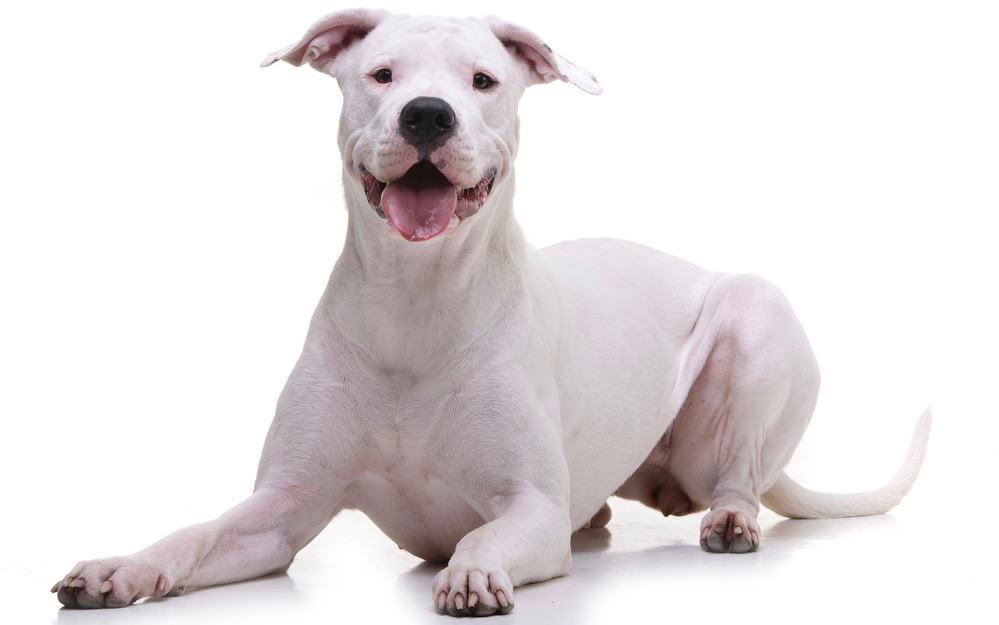
Another way to know how big your puppy will get is by looking at their paws. If they are unusually small, then your puppy will likely be a smaller dog as an adult.
As adults, male Dogo Argentinos weigh between 88 to 99 pounds with a height of 24 and 27 inches while the female Dogo Argentino weighs around 71 and 77 pounds and stands at 23 and 25 inches.
Will Neutering/Spaying My Dogo Argentino Affect His Growth?
Neutering is for males and spaying is for females. These procedures involve the removal of reproductive organs, testes for males, and ovaries for females.
It is recommended that you spay or neuter your puppy between the ages of four to six months. The process should not be done early because it can lead to joint, skeleton, and formation issues.
There are benefits to spaying or neutering your puppy. They include reduced aggressive behaviors, prevents pregnancy for females, and breeding for males.
These procedures are also known to minimize the risk of cancer affecting the reproductive organs.
However, spaying or neutering can increase the risk of obesity and conditions such as hip dysplasia and abnormal bone growth.
Dogo Argentino Height Chart
The height of your Dogo Argentino can tell you whether they have stunted growth or not. You can measure your puppy’s height at home.
Let your puppy stand straight against a wall. Take a flexible measuring tape and measure from the ground to the withers. The withers are between the shoulder blades of your puppy and an inch below the neck. This is your puppy’s height.
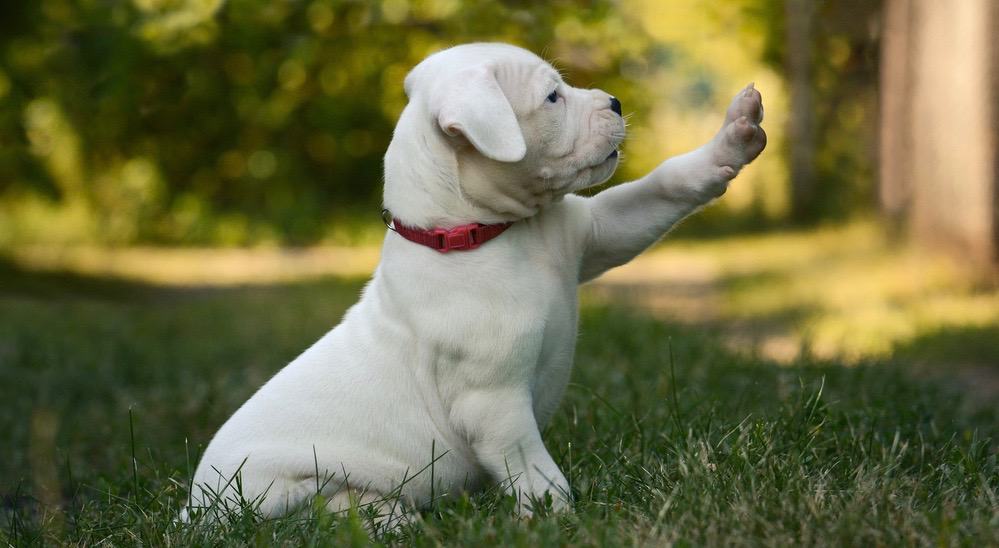
On average, the height of a female Dogo Argentino is between 23 and 25 inches while their male counterparts stand at around 24 and 27 inches.
Dogo Argentino vs Cane Corso Size
Both the Dogo Argentino and Cane Corso are large dogs but have a slight difference in weight.
Although the heights are similar for both breeds, ranging from 24 to 27 inches for males and 23 to 25 inches for females, there is a notable difference in weights between the breeds.
Cane Corsos are heavier weighing between 99 and 110 pounds for males and 88 and 99 pounds for females.
Dogo Argentino meanwhile has a maximum weight of 99 pounds for males and a maximum weight of 77 pounds for females.
Factors That Affect Dogo Argentino Growth
The growth of your Dogo Argentino puppy can be affected by the following factors:
Genetics & Gender
Genetics is a major key that affects the growth rate of your puppy. The physical traits can be passed down from the parents to the puppy.
Therefore, if the parents of your puppy are shorter than average, the chance is high that your puppy will be shorter as adults.
Generally, male Dogo Argentino and bigger and heavier than their female counterparts.
Nutrition
Depending on the size and age of your Dogo Argentino, you need to feed your puppy a diet that is tailored for their digestive needs throughout their stages of life.
Since Dogo Argentinos are large dogs, ensure that the food you buy is meant for large dogs.
Work with your vet to come up with a feeding schedule and the best food for the growth of your Dogo Argentino puppy. Apart from providing lean protein, healthy fats, vitamins, and minerals, you should give your puppy fresh and clean water.
Physical Activity & Health
Since Dogo Argentino is an athletic, muscular, and energetic dog, they have lots of stamina hence needing plenty of exercises.
An adult Dogo Argentino needs at least an hour of exercise per day but also 90 minutes is recommended. Exercises such as walking, jogging, weight pulling, fetch, and hiking are great for your puppy.
Work with your vet and breeders to determine if there is any genetic health condition that can affect your puppy.
What If My Dogo Argentino Is Not the Right Weight
If your Dogo Argentino has gained extra weight, it can be detrimental to their health because excess weight can lead to dangerous diseases such as heart disease, diabetes, and dysplasia.
Helping your puppy lose weight will help to keep them healthy and happy.
Take your puppy to the vet for a medical check-up before helping them lose weight at home. This will rule out any medical issues that may be causing the weight changes.
Once the health issues have been eliminated, the following are the ways to help your puppy attain a healthy weight:
- Reduce the amount of food you are feeding your puppy.
- Feed your puppy high-quality foods.
- Replace commercial treats with healthier options such as baby carrots, apples, and green beans.
- Exercise your puppy through short walks, swimming, or playing catch.
How Much Does It Cost to Own a Dogo Argentino?
On average, a puppy costs between $1000 to $4000, when you purchase from a reputable breeder.
If the puppy has a specific good bloodline, the price can go up to $8000. Other factors that affect the price of a Dogo Argentino puppy include AKC papers, location, and vaccinations.
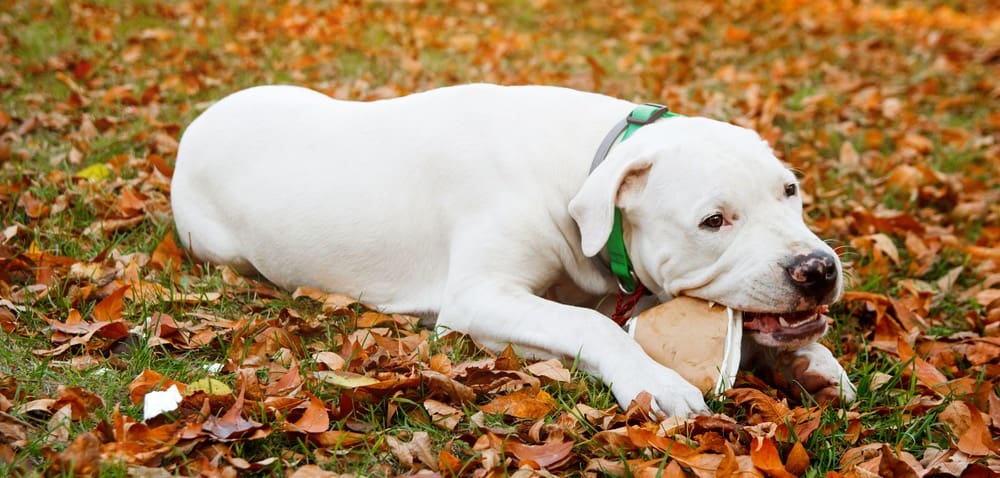
During the first year of being a Dogo Argentino owner, you will spend around $3000 because there are more one-time purchases and extra medical care. The price will then go down to around $1700 per year.
Dogo Argentino Genetics and Common Health Problems
Taking your Dogo Argentino for early medical check-ups will help prepare or prevent any health conditions that may affect your puppy.
The following are the medical conditions that Dogo Argentinos are genetically predisposed as a breed:
Hip and Elbow Dysplasia – this disease leads to pain in the hip and elbow joints causing discomfort and abnormality. This condition can be treated through surgery.
Intestinal Parasites – Dogo Argentino is exposed to intestinal parasites such as hookworms, tapeworms, and roundworms.
Early detection of the specific parasite affecting your puppy will enable your vet to provide the right treatment.
Gastric Dilatation Volvulus (GDV) – this condition affects most large dogs including Dogo Argentino. This condition happens when the stomach expands and traps what is in it. It can be fatal if not treated early.
Oral Health – bacteria cause plaque in your puppy’s mouth leading to an unpleasant smell and bad breath. This can be eliminated through tooth cleaning, regular brushing, and feeding your puppy diet for dental health.
Filariasis – this condition is caused by mosquito bites, and it often happens during humid and warm times.
Deaf – this is another health condition common to the Dogo Argentino.
Final Words
Understanding the developmental stages of your Dogo Argentino is necessary for their healthy growth. Knowing when to wean, train, and vaccinate them will prepare you as a new owner.
The growth of your puppy can be slowed down by certain factors such as health conditions, diet, and physical activity.
It is advised that you check the weight chart regularly and visit your vet often for specific advice on how you can best take care of your puppy in terms of diet, exercise, and medical check-ups they need.

